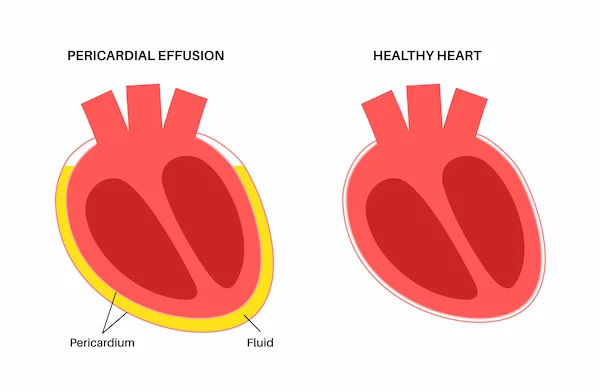What Are Whole Foods? A Complete Guide to Healthy Eating
Learn what whole foods are, how a whole foods diet supports health, and simple, clean eating tips, shopping lists, and meal ideas you can start today.


Introduction: Why Whole Foods Matters
If you want a simple way to eat better, focusing on whole foods is a smart place to start. A whole foods diet centres on foods that are close to their natural state—think vegetables, fruits, beans, whole grains, nuts, seeds, eggs, plain yoghurt, fish, and minimally processed meats. Many people call this clean eating, but labels aside, the goal is the same: more real, nutrient-rich foods and fewer highly processed options high in added sugar, sodium, and unhealthy fats. This balanced approach can support heart health, healthy weight, steady energy, and overall well-being.Consult a Top Nutritionist for Personalised Advice
What Are Whole Foods? Clear Definitions and Everyday Examples
Whole foods are foods that are unprocessed or only lightly processed, so they keep most of their natural nutrients and structure. Some examples of common whole foods are given below:
Common whole foods
• Vegetables and fruits (fresh, frozen, or canned without added sugar or heavy syrups)
• Whole grains (oats, brown rice, quinoa, whole-wheat bread, barley, farro, bulgur, corn)
• Legumes (beans, lentils, chickpeas, peas, soy foods such as edamame and tofu)
• Nuts and seeds (almonds, walnuts, peanuts, chia, flax, pumpkin seeds)
• Dairy or dairy alternatives (plain milk or yoghurt; unsweetened fortified soy milk)
• Eggs
• Fish and seafood (fresh, frozen, or canned in water)
• Poultry and lean meats (preferably unprocessed or minimally processed)
• Healthy fats (avocados, olives, nut butters; small amounts of unsaturated oils)
What about processing?
• Not all processing is bad; washing, chopping, freezing, and pasteurising can make foods safe, affordable, and convenient with minimal nutrient loss.
• “Highly processed” or “ultra-processed” foods usually have long ingredient lists and often include excess sodium, added sugars, refined grains, and additives. Common examples include sugary drinks, sweets, many packaged snacks, instant noodles, and some ready-to-eat meals.
Why a Whole Food Diet Supports Health
A diet rich in whole foods is consistently linked with better health outcomes in large populations.
Key reasons are:
• More fibre: Whole grains, beans, vegetables, and fruits provide fibre that supports gut health, promotes fullness, aids digestion, and can help lower LDL cholesterol.
• Better nutrient density: Whole foods contain vitamins, minerals, antioxidants, and healthy fats that support heart and metabolic health.
• Balanced blood sugar: Foods with fibre, protein, and healthy fats slow digestion and support steadier energy levels.
• Less added sugar, sodium, and unhealthy fats: Replacing highly processed foods with whole foods naturally reduces excess intake of these ingredients.
What the evidence shows
• Eating plenty of vegetables and fruits is linked with lower risks of heart disease, stroke, and some cancers.
• Whole grains are associated with lower risks of heart disease and type 2 diabetes compared with refined grains.
• Well-researched dietary patterns such as the Mediterranean and DASH diets—both centred on whole foods—show strong benefits for heart health and blood pressure.
General intake guidelines from major health organisations
• Added sugars: Less than 10% of total daily calories; WHO recommends ideally below 5% for added benefits.
• Sodium: Aim for less than 2,300 mg per day; WHO suggests less than 5 g of salt (about 2 g sodium).
• Fruits and vegetables: Many public health bodies recommend making half your plate produce; WHO suggests at least 400 g per day (not including starchy vegetables).
Clean Eating vs Whole Foods: What’s the Difference?
Clean eating is a popular term, though not formally defined in medical or scientific literature. It usually means choosing minimally processed foods and limiting added sugars, sodium, and refined grains—so it overlaps with a whole foods diet. However:
• Clean eating can become too rigid for some, and labelling foods as “good” or “bad” can create unnecessary stress.
• Some processed foods are nutritious and convenient, such as frozen vegetables, canned beans, unsweetened yoghurt, and whole-grain bread.
• Foods such as oils, yoghurt, and tofu are technically processed but still fit well into balanced eating patterns.
Bottom line: Focus on variety, balance, and consistency rather than strict rules.
How to Build a Balanced Plate with Whole Foods
Here is how to build a simple plate guide inspired by widely used public health models:
• Half your plate: Vegetables and fruits (the more colours, the better)
• One-quarter: Whole grains or starchy vegetables (brown rice, quinoa, whole-wheat pasta, corn, potatoes with skin)
• One-quarter: Protein (beans, lentils, tofu, fish, poultry, eggs, lean meats)
• Add healthy fats: Such as olive oil, nuts, seeds, and avocado
• Drinks: Water, unsweetened tea, or coffee; keep sugary drinks for occasional treats
Easy meal ideas include:
• Breakfast: Oatmeal with berries, chia seeds, and peanut butter; or plain yoghurt with fruit, nuts, and cinnamon
• Lunch: Mixed salad with chickpeas, vegetables, olive oil, and lemon; whole-grain bread on the side
• Dinner: Baked salmon or tofu with roasted vegetables and quinoa; or bean-and-vegetable chilli with brown rice
• Snacks: Fruit and nuts, hummus with carrots, whole-grain crackers with cheese, or a hard-boiled egg
Smart Shopping, Label Reading, and Budget Tips for Clean Eating
You can eat well without overspending. Planning and smart shopping make it realistic.
A few budget-friendly strategies are:
• Plan 3–4 simple meals for the week and create a short shopping list
• Compare unit prices and choose shop brands.
• Pick in-season produce and rely on frozen or low-sodium canned options when prices rise.
• Build meals around cost-effective staples: beans, lentils, eggs, oats, brown rice, frozen vegetables.
• Cook once, eat twice—prepare extra grains, beans, or vegetables for quick meals.
Label-reading tips
• Ingredients list: Shorter can be simpler, but focus mainly on the first few ingredients.
• Whole grains: Look for “100% whole grain” or “whole [grain]” as the first ingredient.
• Added sugars: Look for words such as sugar, honey, maple syrup, corn syrup, fructose, and dextrose. Choose foods with little or none.
• Sodium: On the label, 5% Daily Value (DV) or less is low; 20% is high.
• Fats: Prioritise products with more unsaturated fats and fewer saturated fats; avoid trans fats.
Sample 3-Day Whole Foods Meal Ideas
These simple mix-and-match ideas can be adjusted to your energy needs, activity level, and goals.
Day 1
• Breakfast: Overnight oats with milk or fortified soy milk, chia seeds, and sliced banana
• Lunch: Lentil soup, side salad, whole-grain bread
• Snack: Apple with almonds
• Dinner: Tofu stir-fry with mixed vegetables and brown rice, drizzled with a low-sodium soy sauce alternative
Day 2
• Breakfast: Plain yoghurt with strawberries, walnuts, and oats
• Lunch: Whole-grain wrap with hummus, roasted vegetables, and greens
• Snack: Carrots and cucumber with tzatziki or hummus
• Dinner: Baked chicken or chickpea patties, roasted sweet potatoes, steamed broccoli
Day 3
• Breakfast: Veggie scramble (eggs or tofu) with spinach, tomatoes, and mushrooms; whole-grain toast
• Lunch: Quinoa bowl with black beans, corn, avocado, salsa, and lime
• Snack: Orange with whole-grain crackers and cheese
• Dinner: Salmon or bean-and-vegetable stew, mixed salad, farro
Common Pitfalls and How to Stay Flexible
Some common pitfalls include:
• All-or-nothing thinking: Perfection is not required; aim for steady improvements.
• Over-restriction: A whole foods diet still allows room for favourite treats.
• Ignoring portions: Even healthy foods can exceed energy needs if portions are too large.
• Skipping protein or fibre: Combine them with healthy fats for satisfaction.
• Not personalising: Adapt the approach to your culture, budget, preferences, and health needs.
Conclusion
Choosing a whole foods diet is a practical and enjoyable way to support better health. It encourages eating more nutrient-rich foods while reducing highly processed options that offer little nutritional value. The approach is flexible, adaptable to many lifestyles, and suitable for most budgets. With simple strategies for shopping, meal planning, and label reading, whole foods become easier to incorporate into everyday life. Small, consistent steps can lead to lasting benefits for your energy, well-being, and overall health.Consult a Top Nutritionist for Personalised Advice
Consult a Top Nutritionist for Personalised Advice

Dr. Ramalinga Reddy
General Physician
5 Years • MBBS MD General medicine
Bengaluru
PRESTIGE SHANTHINIKETAN - SOCIETY CLINIC, Bengaluru
Dt. Ila Sharma
Clinical Nutritionist
18 Years • Master in food & Nutrition
Gurugram
VIPUL GREENS - SOCIETY CLINIC, Gurugram
Dr Sumanth R
General Physician
2 Years • MBBS
Bengaluru
PRESTIGE SHANTHINIKETAN - SOCIETY CLINIC, Bengaluru
Mrs Sneha P V
Nutritionist
10 Years • Master of science in Food and Nutrition
Bengaluru
Apollo Clinic, Sarjapur Road, Bengaluru
Dr. Sasikamalam
General Practitioner
1 Years • MBBS
COIMBATORE
Apollo Sugar Clinic Coimbatore, COIMBATORE
Consult a Top Nutritionist for Personalised Advice

Dr. Ramalinga Reddy
General Physician
5 Years • MBBS MD General medicine
Bengaluru
PRESTIGE SHANTHINIKETAN - SOCIETY CLINIC, Bengaluru
Dt. Ila Sharma
Clinical Nutritionist
18 Years • Master in food & Nutrition
Gurugram
VIPUL GREENS - SOCIETY CLINIC, Gurugram
Dr Sumanth R
General Physician
2 Years • MBBS
Bengaluru
PRESTIGE SHANTHINIKETAN - SOCIETY CLINIC, Bengaluru
Mrs Sneha P V
Nutritionist
10 Years • Master of science in Food and Nutrition
Bengaluru
Apollo Clinic, Sarjapur Road, Bengaluru
Dr. Sasikamalam
General Practitioner
1 Years • MBBS
COIMBATORE
Apollo Sugar Clinic Coimbatore, COIMBATORE
More articles from General Medical Consultation
Frequently Asked Questions
1) Are frozen or canned foods considered whole foods?
Yes—if they are plain and minimally processed. Choose frozen vegetables and fruits without sauces or sugar. Pick no-salt-added or low-sodium canned beans and vegetables, and rinse before use. Canned fish in water is also a convenient whole-food option.
2) Is bread or pasta allowed on a Whole Foods diet?
Yes. Choose whole-grain options such as whole-wheat bread, whole-grain pasta, brown rice, quinoa, or oats. These provide fibre and nutrients missing from refined grains.
3) Will a whole foods diet help me lose weight?
It can. Whole foods tend to be more filling due to their fibre content, which can help manage appetite and support calorie balance. Pair whole foods with mindful eating, regular physical activity, good sleep, and stress management.
4) How does clean eating differ from whole foods eating?
They often overlap. Clean eating focuses on minimally processed foods and reducing refined grains and added sugars, while whole foods eating emphasises flexibility and evidence-based choices.
5) What are the best snacks for clean eating?
Great options include fruit with nuts, yoghurt with berries, hummus with vegetables, whole-grain crackers with cheese, or a hard-boiled egg with cherry tomatoes.




